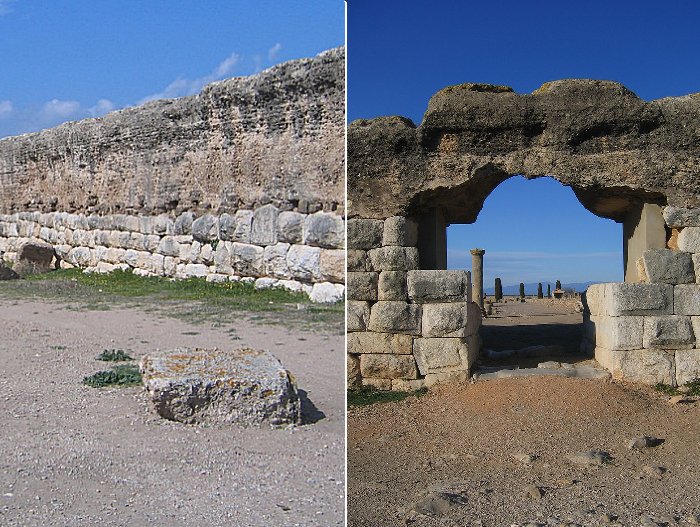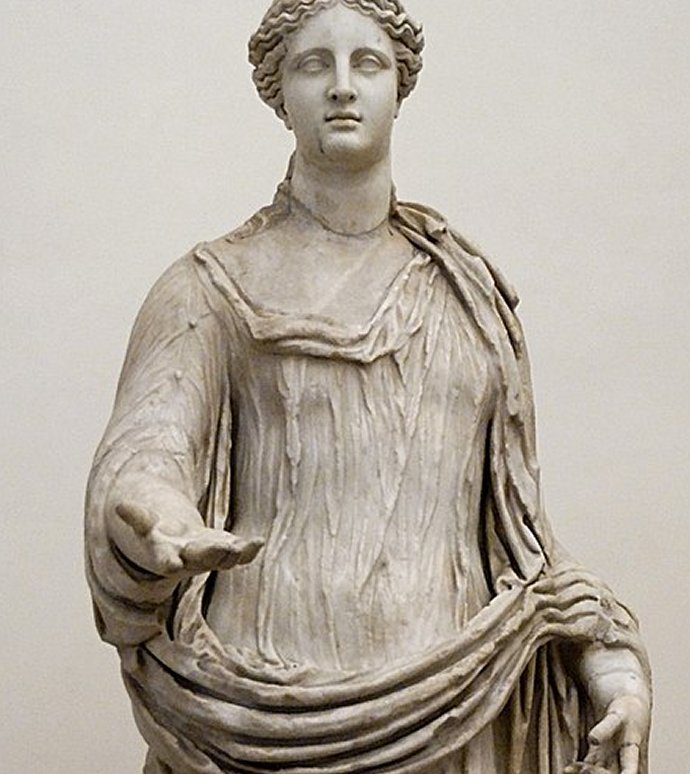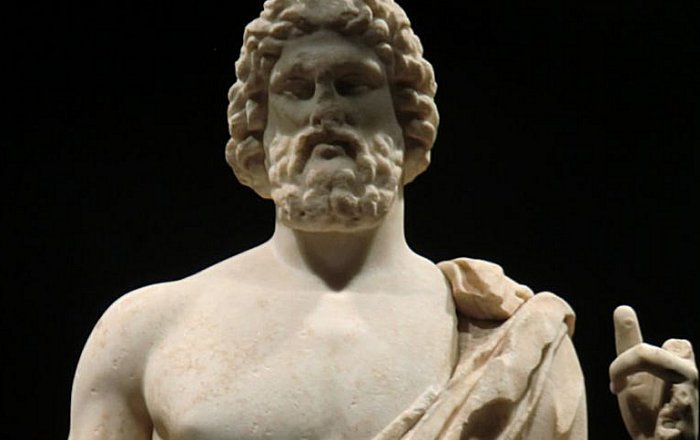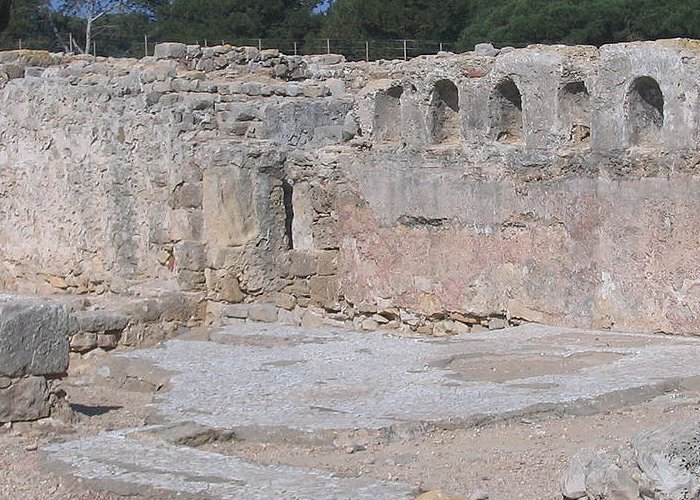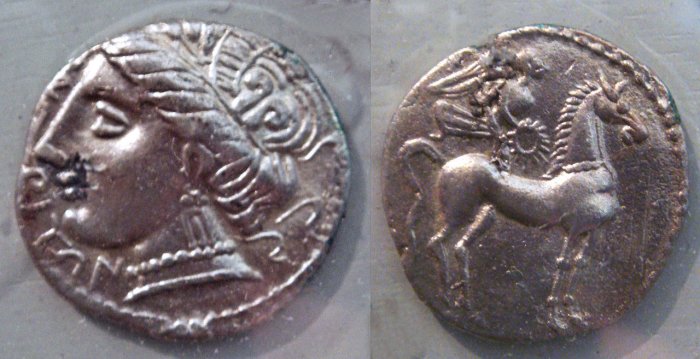Ancient City Empuries (Emporiae) With Best Greek Ruins Located Outside Of Greece
A. Sutherland - AncientPages.com - The 2,500-year-old Empuries (also Emporiae) site on the Costa Brava was built in 575 BC. It was a Greek and, later, a Roman colony located on the northeastern coast of Spain.
Left: Emporiae - Remains of the Roman wall in the ancient city. Image credit: David Mateos García - CC BY 2.0; Right: Roman gate wall in the city of Empuriae, founded in 575 BC. Image credit: Marta A A - CC BY-SA 3.0.
The city of Emporiae, was founded in 575 BC by Ionian Greek colonists from Phocaea (Phocaia) under the name 'Emporion, which means 'market.' It developed under the strong influence of the two most prominent cultures of the ancient world: Greek and Roman.
However, the site is considered the home of the best ancient Greek ruins located outside of Greece.
Recently, Spanish archaeologists unearthed the remains of a large temple in Catalonia, northeast of Spain. The discovered structure was, according to researchers, used for worship approximately 2,500 years ago. The temple was dedicated to Demeter, the Greek goddess of fertility and fertility.
She was the goddess of agriculture and mother to the goddess Persephone, a daughter of Zeus. She provided nutrition to everyone on earth – and, to help man, introduced him to wheat.
Demeter. Coarse-grained marble, Roman artwork; the head is a modern restoration. Image credit: Marie-Lan Nguyen - CC BY 2.5
The temple – probably built in the 6th century BC - was rebuilt several times. The building functioned until at least the 3rd century BC, thanks to these preservations.
Although now in ruins, it was once an essential part of the ancient city of Emporiae, located on the Mediterranean coast of Catalonia, on the Costa Brava. In the beginning, the town was occupied by the ancient Greeks.
The Greek sculpture of Asclepius - dated to the 2nd century BC. Image credit: Museum of Archeology of Catalonia, Empúries.
This marble statue associated with the city of Empúries represents a male deity with a beard and cloak. His attributes are - according to tradition- identified with Asclepius, the Greek god of medicine. It was sculpted in two parts that fit together at the torso. It comes from a Hellenistic workshop in the eastern Mediterranean and would have arrived at the end of the 2nd century BC.
It is worth noting that the different parts of this particular statue were found, in Empúries, in 1909, on the upper terrace of the sanctuaries, located to the south of the Greek city.
The iconographic features of the statue, together with the fragments of the representation of a serpent found in the place, contributed much for researchers, who could identify it with the Greek god Asclepius, the Roman Aesculapius.
Paleochristian Basilica – Empúries. Image credit: CC BY 2.0
Later, Emporiae became more and more of a Roman city due to the early presence of the Romans and their troops that landed there in 219 BC. It was a historical event strongly connected with Hannibal's march toward Italy.
For the Roman troops conducting their operations in Spain, the city of Emporiae has become a vital transshipment point on the transport route from Italy. Under Emperor Julius Caesar, Emporiae gained the status of a Roman colony in 45 BC.
Emporiae coins, 5th-1st century BC. Image credit: PHGCOM - CC BY-SA 3.0
After a period of prosperity and uninterrupted development, about the 1st/2nd century AD, an economic collapse took place. A general crisis caused by the loss of the city's leading role on the Western trade route, certainly played an important role.
However, Emporiae continued as a more modest, walled settlement well into the early Christian period. From the 6th century, the city became the diocese's seat and later the local Principality's capital. The end of the ancient city had to come, so it happened.
It was caused at the beginning of the 8th century by the invasion of the Arabs. Sometime in the early Middle Ages, the city was abandoned due to its unprotected location for looting from the sea.
Today, Empuries is one of the important archaeological sites in Catalonia. Once, it was a crucial element of connection with other Mediterranean areas of the Iberian Peninsula.
The preserved remains shed light on the city's ancient past, which still has much to offer. Among many Greek and Roman ruins, there is a temple dedicated to the Hellenistic-Egyptian god, Serapis, and another one that honored Artemis of Ephesus).
Written by – A. Sutherland - AncientPages.com Senior Staff Writer
Copyright © AncientPages.com All rights reserved. This material may not be published, broadcast, rewritten or redistributed in whole or part without the express written permission of AncientPages.com
More From Ancient Pages
-
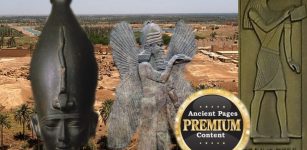 Surprising Ancient Secrets Of The ‘Second Thoth’ And God Osiris
Egyptian Mythology | Sep 27, 2018
Surprising Ancient Secrets Of The ‘Second Thoth’ And God Osiris
Egyptian Mythology | Sep 27, 2018 -
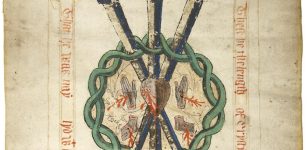 Previously Unkown Manuscript Reveals New Insight Into Medieval Christian Beliefs In England
Archaeology | Oct 26, 2021
Previously Unkown Manuscript Reveals New Insight Into Medieval Christian Beliefs In England
Archaeology | Oct 26, 2021 -
 Astronomically Aligned Temples And Pyramids Of Ancient World
Featured Stories | Dec 10, 2021
Astronomically Aligned Temples And Pyramids Of Ancient World
Featured Stories | Dec 10, 2021 -
 Young Boy Discovers Rare Ancient Roman Treasure In Sussex, UK
Archaeology | Apr 15, 2024
Young Boy Discovers Rare Ancient Roman Treasure In Sussex, UK
Archaeology | Apr 15, 2024 -
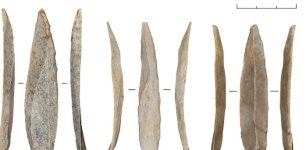 Mass Production Of Stone Bladelets Led To A Cultural Shift In Paleolithic Levant
Archaeology | Jan 7, 2023
Mass Production Of Stone Bladelets Led To A Cultural Shift In Paleolithic Levant
Archaeology | Jan 7, 2023 -
 2,500-Year-Old Olmec Related Mexican Cave Paintings Are Now Restored And Protected
Civilizations | Sep 18, 2015
2,500-Year-Old Olmec Related Mexican Cave Paintings Are Now Restored And Protected
Civilizations | Sep 18, 2015 -
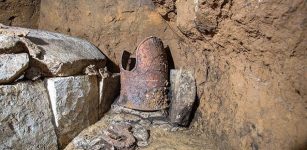 1,500-Year-Old Tunnel Tomb With Human Remains And Artifacts Accidentally Unearthed In Japan
Archaeology | Feb 23, 2018
1,500-Year-Old Tunnel Tomb With Human Remains And Artifacts Accidentally Unearthed In Japan
Archaeology | Feb 23, 2018 -
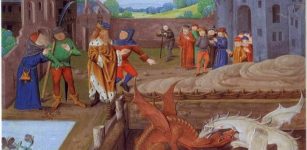 Magical Dinas Emrys – Battle Of The Dragons And Merlin’s Hidden Treasure
Featured Stories | May 21, 2019
Magical Dinas Emrys – Battle Of The Dragons And Merlin’s Hidden Treasure
Featured Stories | May 21, 2019 -
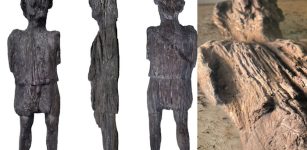 Unexpected Discovery Of Rare Ancient Roman Carved Wooden Figure In Buckinghamshire
Archaeology | Jun 11, 2022
Unexpected Discovery Of Rare Ancient Roman Carved Wooden Figure In Buckinghamshire
Archaeology | Jun 11, 2022 -
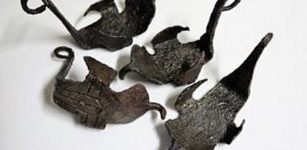 Remarkable ‘Hipposandals’ Found At Vindolanda
Archaeology | Aug 18, 2018
Remarkable ‘Hipposandals’ Found At Vindolanda
Archaeology | Aug 18, 2018 -
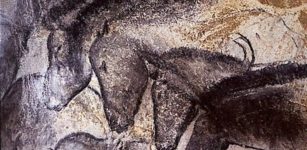 Prehistoric Artwork In Chauvet-Pont d’Arc Cave 10000 Years Older Than Previously Thought
Archaeology | Apr 12, 2016
Prehistoric Artwork In Chauvet-Pont d’Arc Cave 10000 Years Older Than Previously Thought
Archaeology | Apr 12, 2016 -
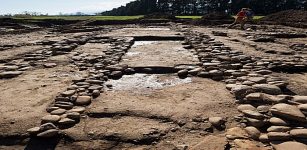 Sanctuary Of God Mithra And His Mysterious Religion Unearthed In Corsica
Archaeology | Mar 2, 2017
Sanctuary Of God Mithra And His Mysterious Religion Unearthed In Corsica
Archaeology | Mar 2, 2017 -
 Robert Fortune’s Dangerous Mission To Obtain Tea From The Chinese
Featured Stories | Feb 24, 2020
Robert Fortune’s Dangerous Mission To Obtain Tea From The Chinese
Featured Stories | Feb 24, 2020 -
 The Untold Story Of The Inca – Fire In The Sky – Part 1
Civilizations | Jul 2, 2019
The Untold Story Of The Inca – Fire In The Sky – Part 1
Civilizations | Jul 2, 2019 -
 Why Coyote Wanted People To Die For Their Own Good – A Caddo Nation Legend
Featured Stories | Jun 18, 2021
Why Coyote Wanted People To Die For Their Own Good – A Caddo Nation Legend
Featured Stories | Jun 18, 2021 -
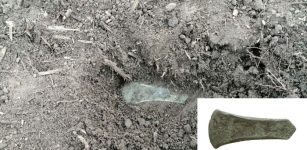 Rare Early Bronze Age Axe Discovered In Slovakia
Archaeology | Jul 2, 2022
Rare Early Bronze Age Axe Discovered In Slovakia
Archaeology | Jul 2, 2022 -
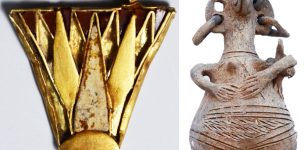 Stunning Gold Jewelry And Artifacts From The Time Of Nefertiti Found In Bronze Age Tombs In Cyprus
Archaeology | Dec 2, 2021
Stunning Gold Jewelry And Artifacts From The Time Of Nefertiti Found In Bronze Age Tombs In Cyprus
Archaeology | Dec 2, 2021 -
 Humans Were Apex Predators For Two Million Years
Archaeology | Oct 18, 2022
Humans Were Apex Predators For Two Million Years
Archaeology | Oct 18, 2022 -
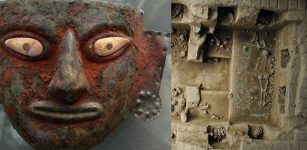 Ancient Tomb Of Peru’s Moche Priestesses Unearthed
Archaeology | Jul 23, 2016
Ancient Tomb Of Peru’s Moche Priestesses Unearthed
Archaeology | Jul 23, 2016 -
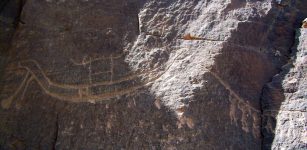 Pre-Pharaonic Petroglyphs Used To Study Egyptian Cult Of The Gods
Archaeology | Mar 15, 2023
Pre-Pharaonic Petroglyphs Used To Study Egyptian Cult Of The Gods
Archaeology | Mar 15, 2023

